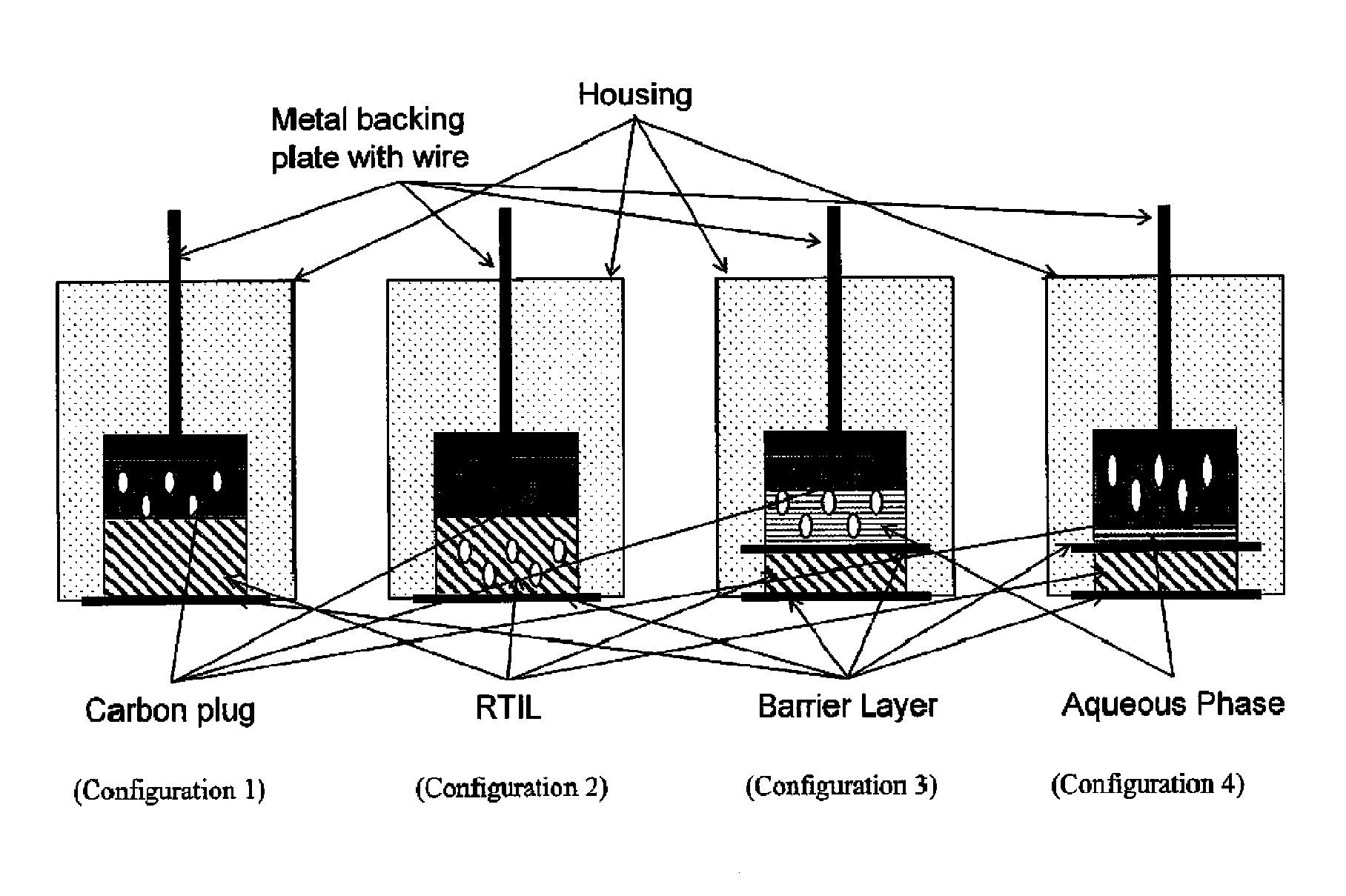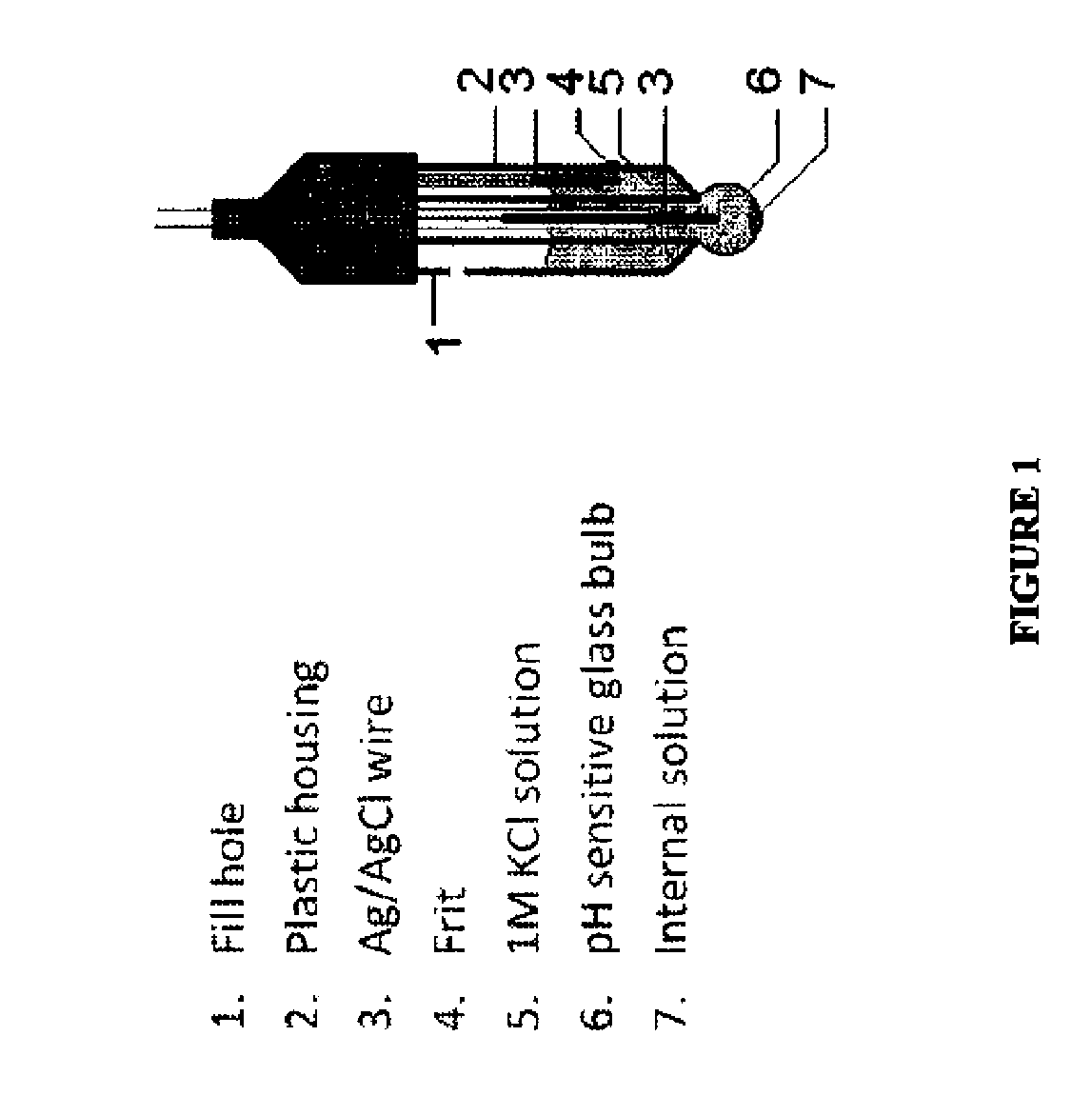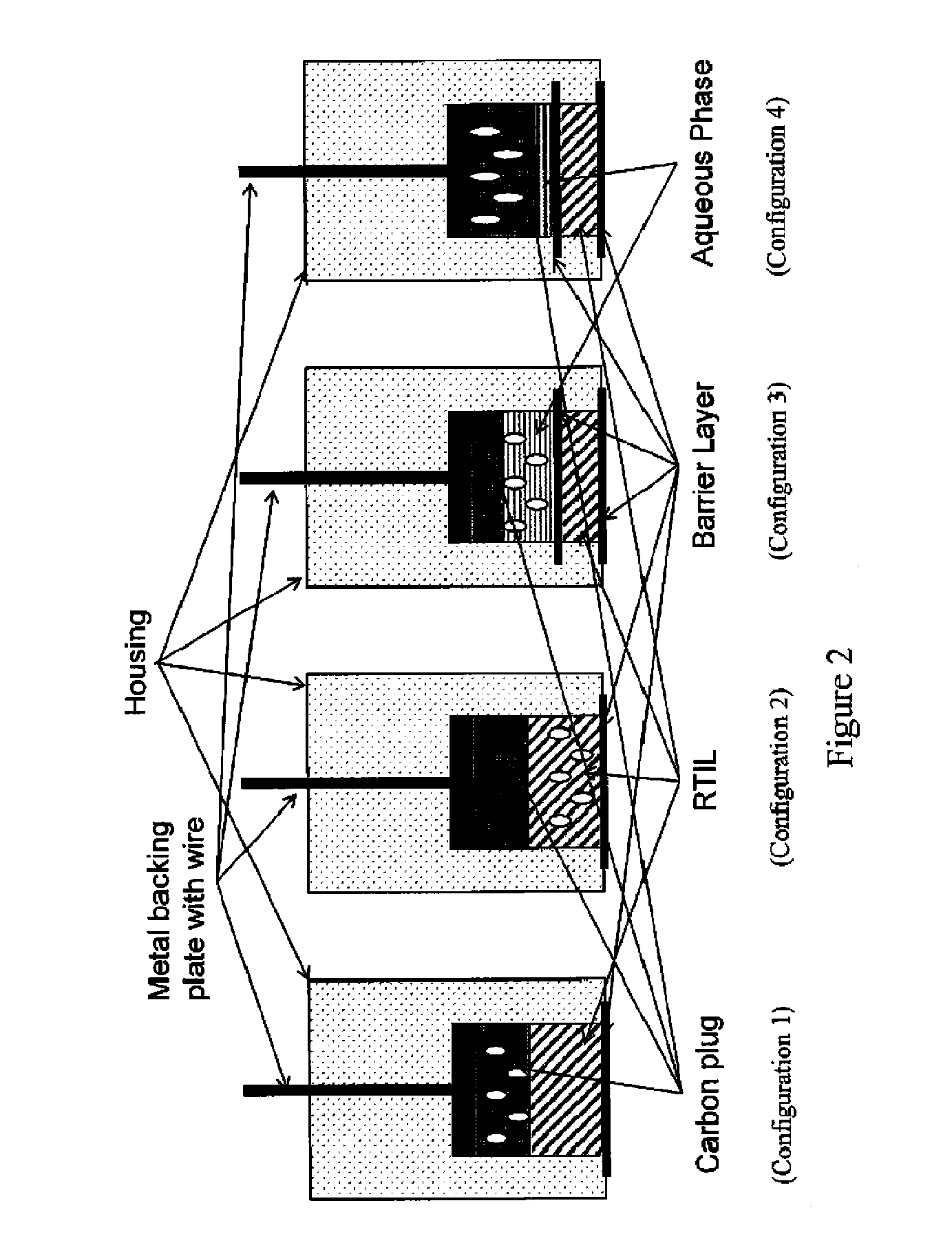Device for providing a means for internal calibration in an electrochemical sensor
a technology of electrochemical sensor and internal calibration, which is applied in the field of chemistry, can solve the problems of compromising the stability of the constant potential of the electrode, affecting the operation of the conventional glass ph probe, and the inclusion of porous frit, so as to achieve greater accuracy and reproducibility in determining the concentration of analy
- Summary
- Abstract
- Description
- Claims
- Application Information
AI Technical Summary
Benefits of technology
Problems solved by technology
Method used
Image
Examples
examples
Materials and Methods: Conductive Components
[0101]A graphite / epoxy composite was prepared by combining 300 mg graphite with 1.15 grams of epoxy A and 150 mg of epoxy B (Epoxy Technology, Bellerica, Md.) using a mortar and pestle.
Multi-Walled Carbon Nanotube (MWCNT) / Graphite / Epoxy Composite with n-butyl-ferrocene
[0102]A MWCNT / graphite / epoxy composite containing n-butyl-ferrocene was prepared by combining, in dichloromethane, 17 mg of multi-walled bamboo-type MWCNTs (bamboo type 5 to 20 μm in length and having an outer wall diameter of 30+ / −15 nm) (Nanolab, Brighton, Mass.) with 17 mg of graphite, 20 mg of n-butyl-ferrocene, 200 mg of epoxy A and 30 mg of epoxy B. The solvent was then evaporated at room temperature.
Room Temperature Ionic Liquid RTIL Phase [C4mpyrr][N(Tf)2]
[0103]As described below, [C4mpyrr][N(Tf)2] was used as the RTIL phase in several of the exemplary embodiments.
1% n-butyl-ferrocene in N-butyl,N-methyl-Pyrrolidinium bis(trifluoromethylsulfony...
embodiment
Sixth Exemplary AIE Embodiment
[0127]A sixth exemplary embodiment without a second electrolytic layer and having the RAM in the plug was constructed with a MWCNT / graphite / epoxy / plug. The PEEK washer adjacent to the plug was omitted; instead, a polyethersulfone membrane wetted with 1% volume:volume solution of n-butyl-ferrocene in [C4mpyrr][N(Tf)2] was placed on top of the plug, followed by a PEEK washer, and the electrode was then compressed as described above. This embodiment is depicted in FIG. 7.
PUM
| Property | Measurement | Unit |
|---|---|---|
| temperatures | aaaaa | aaaaa |
| pH | aaaaa | aaaaa |
| temperature | aaaaa | aaaaa |
Abstract
Description
Claims
Application Information
 Login to View More
Login to View More - R&D
- Intellectual Property
- Life Sciences
- Materials
- Tech Scout
- Unparalleled Data Quality
- Higher Quality Content
- 60% Fewer Hallucinations
Browse by: Latest US Patents, China's latest patents, Technical Efficacy Thesaurus, Application Domain, Technology Topic, Popular Technical Reports.
© 2025 PatSnap. All rights reserved.Legal|Privacy policy|Modern Slavery Act Transparency Statement|Sitemap|About US| Contact US: help@patsnap.com



